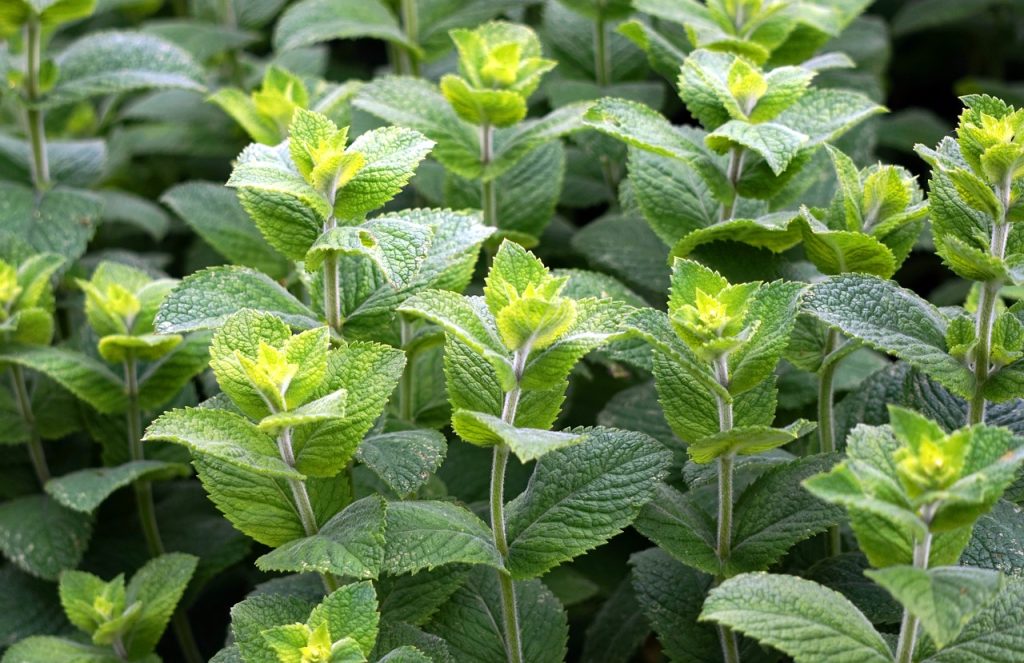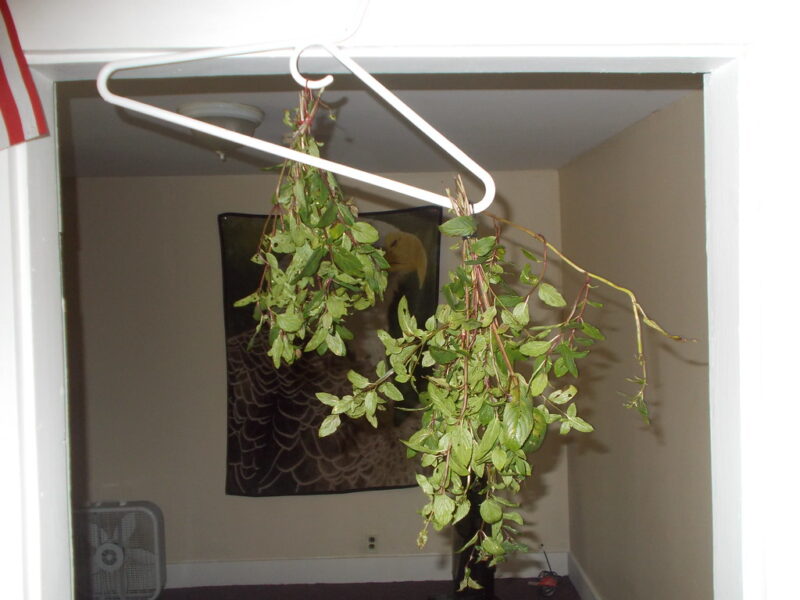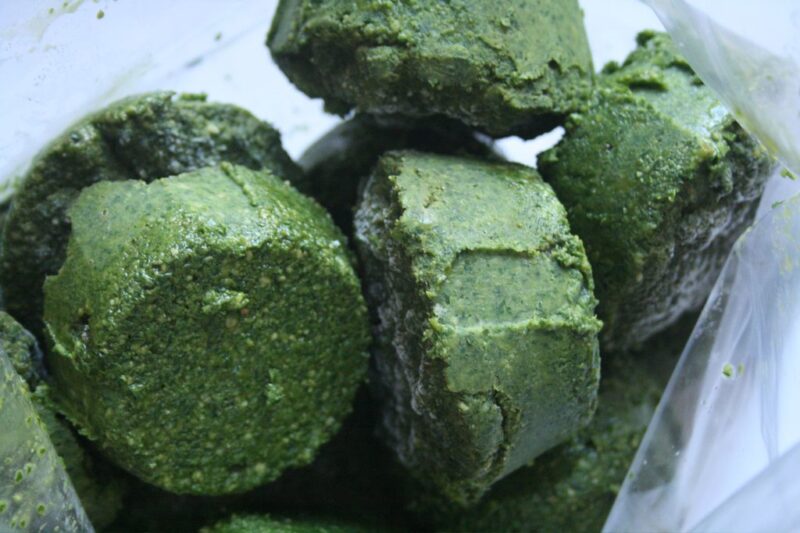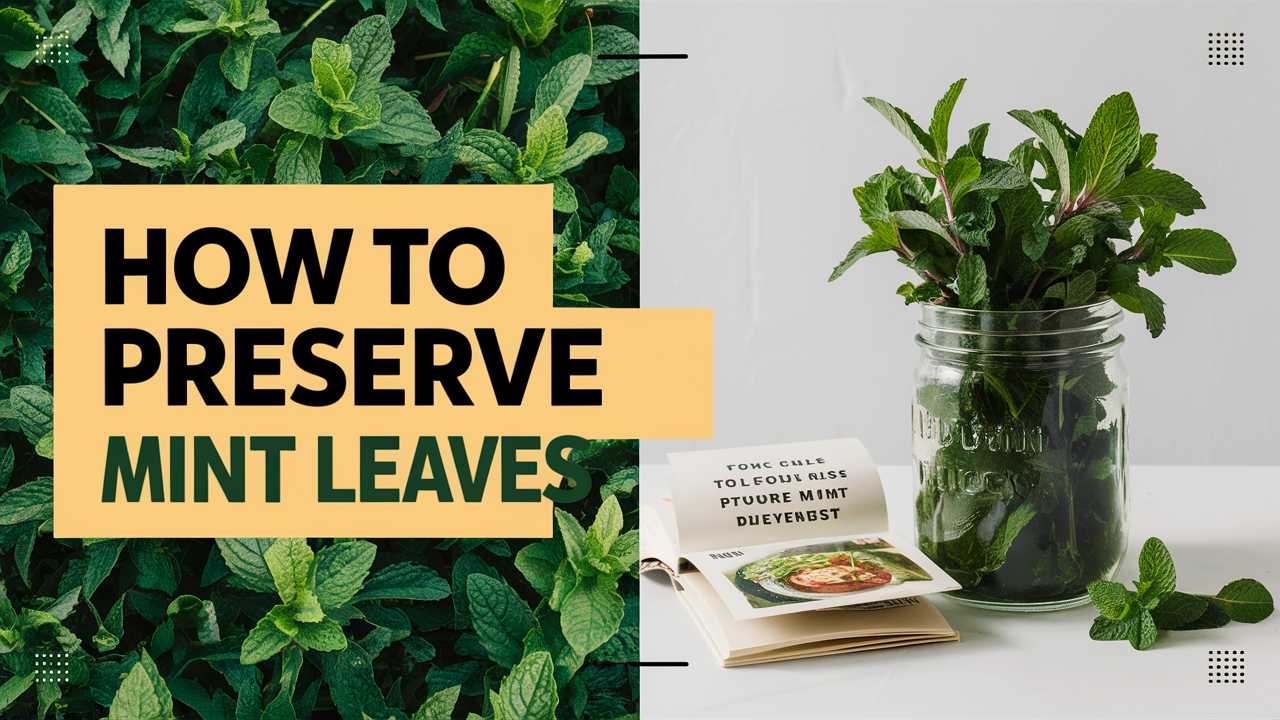Mint is a versatile herb cherished for its vibrant flavor and refreshing aroma, making it a staple in various cuisines and drinks. While fresh mint is often at our fingertips during summer months, its seasonality can sometimes limit our ability to enjoy this delightful herb throughout the year.
The good news is that preserving mint leaves allows you to savor their unique zest long after the growing season has ended. In this post, we will explore the ins and outs of mint preservation, from drying methods to freezing techniques, ensuring you can relish the essence of mint all year round.
Understanding Mint: Varieties and Flavor Profiles

Before diving into preservation techniques, it’s essential to understand the various types of mint available. Pepping up our culinary toolkit begins with familiarity with these varieties, each offering distinctive flavors and uses.
Spearmint, known for its sweet and subtly peppery taste, is often found in sweet dishes and cocktails. On the other hand, peppermint possesses a more robust flavor, accompanied by a cooling sensation, making it ideal for teas, chocolates, and savory dishes. Chocolate mint, an aromatic variety, possesses a hint of chocolate flavor, turning desserts into delightful treats.
These diverse characteristics of mint make it a favorite among chefs and home cooks alike. Whether you’re muddling spearmint into a refreshing mojito or infusing peppermint into herbal tea, knowing each type’s unique profile allows you to make the most out of this incredible herb.
The Importance of Harvesting Fresh Mint Leaves

Harvesting mint at the right time significantly impacts its flavor and preservability. When it comes to mint, the ideal moment for cutting is just before flowering. At this stage, the leaves are at their peak potency, boasting the richest flavor. Look for actively growing stems and leaves; those that are vibrant and free from pest damage will yield the best result.
When harvesting mint, always use sharp scissors or garden shears to make clean cuts, ensuring you don’t harm the plant. Clip stems just above a pair of leaves; this will encourage further growth and maintain the plant’s vitality. Don’t be afraid to take a generous amount; mint is a hardy herb that will thrive even with frequent harvesting.
Choosing the Right Method for Preservation
After successfully harvesting your mint leaves, the next step is to choose a preservation method that aligns with your goals, lifestyle, and preferences. Each method has its merits, and understanding them will help you select the best one for your needs.
Drying

Drying mint is one of the oldest preservation methods and remains one of the most effective. Dehydrating mint concentrates its flavor and aroma, making it a fantastic ingredient for seasoning.
Air Drying: This is the simplest method and requires no specialized equipment. Begin by gently rinsing your mint leaves to remove any dirt or insects. Pat them dry and bundle several stems together. Using kitchen twine, tie the stems and hang them upside down in a cool, dark, and well-ventilated area. Air drying can take anywhere from a few days to a week, depending on humidity. Once the leaves crumble easily, they are ready to store.
Oven Drying: For those seeking a quicker method, consider oven drying. Preheat your oven to the lowest setting (around 180°F / 80°C) and spread the mint leaves in a single layer on a baking sheet. Place them in the oven for 2-4 hours, occasionally checking to ensure they don’t become scorched. Once dry, let them cool before transferring to an airtight container.
Dehydrator: If you have a dehydrator, it’s an excellent investment for preserving herbs. Place the mint leaves in a single layer on the dehydrator trays and set the temperature to around 95°F / 35°C. In this controlled environment, mint can dehydrate within 4-6 hours.
Regardless of the drying method, ensure that you store your dried mint in a cool, dark place. Glass jars work well, as they protect against moisture and light.
Freezing

Freezing is another effective means to preserve the fresh flavor of mint. This technique captures the herb’s aromatic oils, allowing you to enjoy mint’s essence even in the dead of winter.
Freezing Leaves: One of the simplest ways to freeze mint is to wash and dry the leaves, then spread them on a baking sheet in a single layer. Place them in the freezer until solid, and then transfer them to freezer-safe bags or containers. This allows you to take out just the right amount as needed.
Mint Cubes: For added versatility, consider making mint ice cubes. Simply chop fresh mint leaves and place them in an ice cube tray. Fill the compartments with water and freeze. These mint cubes serve as an easy way to add flavor to your drinks or soups.
Pesto Method: Another alternative is to blend mint leaves with olive oil to create a mint pesto. Pour the mixture into ice cube trays and freeze. Once solid, store the cubes in bags. This concentrated mint blend can be used in dressings, marinades, or as a base for sauces.
Freezing mint preserves its texture better than drying, making it suitable for garnishing dishes and adding to salads or cocktails.
The Science of Preservation: Essential Elements
Understanding the science behind preservation elevates the overall experience. The key to successful mint preservation lies in moisture content and temperature control. Breezy surroundings accelerate drying; therefore, choosing a low-humidity area is crucial. On the other hand, when freezing, it’s essential to remove as much air as possible to avoid freezer burn and maintain optimal flavor and texture.
At the molecular level, mint’s potent essential oils, primarily menthol, are responsible for its aromatic profile. Heat can evaporate these oils; hence the low temperatures in freezing and gentle drying methods are paramount for maintaining flavor.
Creative Ways to Use Preserved Mint
Once you’ve successfully preserved your mint, the next step is integrating it into your culinary repertoire. The possibilities are endless, and experimenting with preserved mint can lead to delightful discoveries.
Dried mint adds a robust flavor to various dishes. Scatter it into simmering soups, stews, or sauces to enhance complexity. The herb also shines in Mediterranean and Middle Eastern cuisine, enriching dishes like tabbouleh, yogurt dips, and spice blends.
Frozen mint opens up even more avenues. Toss a mint cube into your morning smoothie for an invigorating kick or incorporate them into a refreshing mint lemonade on hot days. For a unique twist on classic recipes, add frozen mint to chocolate desserts or nut-based pastries, where its aromatic nature will shine through.
The Cultural Significance of Mint
Mint’s historical presence in diverse cultures adds a rich layer to its culinary importance. From being used in ancient Egyptian rituals to its presence in Greek mythology and Roman cuisine, mint holds a storied place across civilizations. It’s no wonder that this herb transcends borders, finding its way into dishes worldwide.
In many Middle Eastern and Indian cuisines, fresh mint is integral to salads, raitas, and biryanis, while in Western cultures, it often graces cocktails and desserts. This ubiquity not only testifies to mint’s adaptability but also showcases its global significance. It’s a herb that has nurtured generations, appearing in shared meals and celebrations, creating connections and memories.
Tips for Successful Mint Preservation
To encapsulate our exploration of mint preservation, here are several tips to ensure your success:
Choose Quality Leaves: Always opt for fresh, vibrant leaves free from disease or insect damage. This ensures optimal flavor and aroma.
Maintain Clean Workspace: When washing and preparing mint, cleanliness protects against contamination and spoilage.
Label Storage Containers: Indicate dates and preservation methods on your containers to avoid confusion and aid in planning your culinary adventures.
Experiment: Don’t be afraid to mix and match your preserved mint in diverse dishes. Experimenting cultivates creativity, leading to new family favorites!
Conclusion
Mint is more than just a culinary herb; it’s a bridge to culinary experiences, rich traditions, and delightful flavors. With the knowledge to preserve mint leaves effectively, you can unlock a treasure trove of culinary opportunities. Whether sprinkling dried mint over hearty stews or tossing a frozen cube into a refreshing summer drink, the preserved essence of mint can transform ordinary meals into extraordinary experiences.






